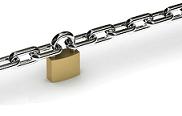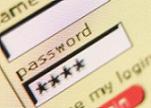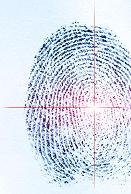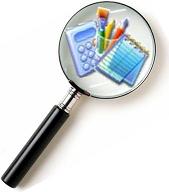|
Some useful smatterings of information, and some more substantial ones too, to help make your working life easier.
Different Access For Different Users
Do you want your database to know who you are? Do you want some users to be able to view your data but not edit it? Do you want to add a password to your database?
All of this can be achieved in Access 2003 using the security settings, or in Access 2007 using a custom-built system. Security serves two purposes. Firstly it's about restricting access to your data. Secondly, it's about identifying who is logged into your database and customising the setup for each person.
Restrict access to your data
There are a couple of ways to restrict access to your data.
- Password-protect your database. You can set up your database so that it asks for a password whenever anyone opens it. In this case, users either know the password and can open the database, or they don't know it and cannot open the database.
- Different login details allow different levels of access. You can have any number of different user names and passwords. These would be put into groups, with each group having its own settings. Common user groups are:
- Full Data Users: can view and edit existing data and add new data.
- Read-Only Users: can view existing data only.
- Data-Input Users: can add new data but cannot view or edit existing data.
Identify database users
Even if you're not worried about the security of your database, there are a number of reasons why you may want people to log into your database. For example, certain screens may only be relevant to certain people and can be removed for everyone else. Or you may want to keep track of who is entering comments; rather than require everyone to include their name, Access can enter the user name of whoever is logged in against their comments. And this can be combined with the different levels of access discussed in 2 (above) to give each person exactly the database they need.
In many cases, although the term 'security' is used, it is this second function that is most useful. Personalising the database to a user or group of users provides you with a high level of control and the opportunity to permit or restrict actions depending on exactly who is logged in.
Want more information? Check out this issue's offer for details of how to contact us and get a fantastic deal on adding security to your database system! |




|
Top TipIn Windows Vista, the Power button on the Start meu puts the computer into Standby - to shut it down, click the arrow next to the Power button and choose Shutdown. In Windows 7, you can choose what happens when you click the Power button. |
i·den·ti·fy ( ī-děn'tə-fī' ):
tr.v.
1. to recognise or establish as being a particular person or thing; verify the identity of.
2. to serve as a means of identification for.
[Other definitions]
Random House Dictionary, ©Random House, Inc 2010 |
Software-Matters Team Quiz

Philippa |

James |

Katherine |

Robin |






|
Who said what? Below are some questions and answers about us, but which answer belongs to which person? Answers in the next issue…
- What book are you reading at the moment?
- Plum Island by Nelson DeMille
- Talking about Jane Austen in Baghdad by Bee Rowlatt & May Witwit
- Enigma by Robert Harris
- Do you untie your shoes when you take them off?
- Yes (if they have laces!)
- Not always
- Not normally
- No, but that's because I don't tie them up when I put them on!
- What colour are your eyes?
- Brown/grey
- Greeny-brown
- Grey
- What sports do you like to watch?
- Cricket and tennis
- Rugby Union and Formula One
- Cycling
- Parachute jump or bungee jump?
- Parachute jump
- No thank you!
- Favourite ice cream?
- Black cherry
- Raspberry ripple
- Creamy Cornish vanilla, in a cone with a flake
- Favourite colour?
- Yellow
- Black
- Blue
- Green
|
Accessories Quiz answers
 |
Check out the answers to last issue's Accessories Quiz. The programs below are all on the Start menu under Programs, Accessories.
1) How can you quickly find the total and average of a list of numbers?
Open up Calculator. On the menu bar, go to View, Scientific. This will give you access to the advanced functions of Calculator. Click the "Sta" button on the far left; this will open another small window. Click the "RET" button to return to the main calculator screen. The buttons below "Sta" should now be available. Ener the first number in your list by either clicking the number buttons or using the number keys on your keyboard, then click the "Dat" button at the bottom left. Enter the next number and click "Dat"; repeat until you've entered the entire list.
|
Click the "Sta" button to view a list of your data. If a number is wrong, click on it and then click"CD" (cancel datum). To start again, click "CAD" (cancel all data). Click "RET" to return to the calculator screen. Add any additional number as before.
When you're happy with the data you've entered, on the calculator screen click "Ave" to display the average of the numbers, and "Sum" to display the total of the numbers.
2) How can you insert part of a screen dump into a document?
To take a screenshot of your entire computer monitor, simply press the Print Screen button on your keyboard. This is usually towards the top right, and may be abbreviated to Prnt Scrn (or something similar). The screenshot will be sent to the clipboard. Alternatively, if you only want a screenshot of one particular window, click on the window and press Alt + Print Screen.
Now you need to save the screenshot. The quickest way to do this is to open up Paint and then press Ctrl+V to paste. Press Ctrl+S to save the picture; to retain the colours and resolution it is usually best to save as file type JPEG/JPG or PNG. You now have a file that can be uploaded onto the internet or inserted into your file.
Some programs, such as Microsoft Word, can also have graphics inserted directly into them. For these programs, you can just open up the file you want to put the picture in and then paste. The screenshot will appear in your file and can be cropped or resized using the tools provided with the program. Note: The screen shot may be resized to fit when it is pasted in.
3) How can you quickly enter the current date and time into your notes to help you log your time?
If you are making notes in Notepad, just press F5 to insert the current date and time. Alternatively go to Edit, Time/Date on the menus.
Notepad is a very quick and simple tool for storing basic notes. However if you want more formatting options, you may find WordPad useful. WordPad will load up quicker than advanced programs such as Microsoft Word on most systems, and the files will usually be smaller too. You can enter the date or time by going to Insert, Date and Time on the menus, choosing a format from the box that comes up, and clicking "OK". This is the same method employed by Microsoft Word. |
Did you know...
…we can provide training
in Microsoft Word,
Excel
and Access - details
available on request.
We want to help you keep your data safe!
Call us on 01747 822616 before 30th September 2010 to discuss adding security to an Access database and we'll give you a whopping 10% off the cost of the project! Just quote Smatterings8 during the call to be eligible.
Don't know whether you might want security or different levels of access for your database? Take a look at this article at the beginning of this issue of Smatterings.
(Reasonable terms and conditions apply. Just ask us for details.)
If you know someone else who might benefit from this offer or anything else in Smatterings, please feel free to pass on the information to them. Just give us the necessary details here and we'll send them a link for you.
PS: Don't forget about our Gamble-Free Guarantee. We guarantee to save you money overall - if we don't then we'll refund the difference. We won't take something on unless it's worth your while, so you can't lose! |
|




